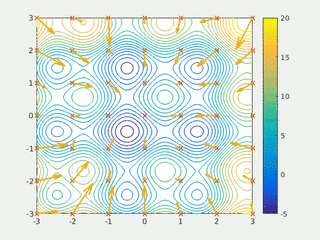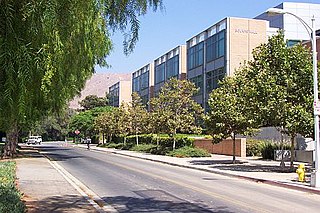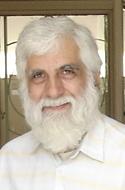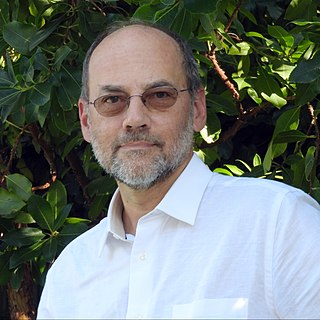Related Research Articles

Lotfi Aliasker Zadeh was a mathematician, computer scientist, electrical engineer, artificial intelligence researcher, and professor of computer science at the University of California, Berkeley. Zadeh is best known for proposing fuzzy mathematics, consisting of several fuzzy-related concepts: fuzzy sets, fuzzy logic, fuzzy algorithms, fuzzy semantics, fuzzy languages, fuzzy control, fuzzy systems, fuzzy probabilities, fuzzy events, and fuzzy information. Zadeh was a founding member of the Eurasian Academy.

Swarm behaviour, or swarming, is a collective behaviour exhibited by entities, particularly animals, of similar size which aggregate together, perhaps milling about the same spot or perhaps moving en masse or migrating in some direction. It is a highly interdisciplinary topic.

In computational science, particle swarm optimization (PSO) is a computational method that optimizes a problem by iteratively trying to improve a candidate solution with regard to a given measure of quality. It solves a problem by having a population of candidate solutions, here dubbed particles, and moving these particles around in the search-space according to simple mathematical formula over the particle's position and velocity. Each particle's movement is influenced by its local best known position, but is also guided toward the best known positions in the search-space, which are updated as better positions are found by other particles. This is expected to move the swarm toward the best solutions.

Electrowetting is the modification of the wetting properties of a surface with an applied electric field.
Swarm intelligence (SI) is the collective behavior of decentralized, self-organized systems, natural or artificial. The concept is employed in work on artificial intelligence. The expression was introduced by Gerardo Beni and Jing Wang in 1989, in the context of cellular robotic systems.

The Marlan and Rosemary Bourns College of Engineering, or commonly known as Bourns Engineering or BCOE, is an Accreditation Board for Engineering and Technology-accredited College of Engineering located in Riverside, California on the campus of the University of California, Riverside. The Marlan and Rosemary Bourns College of Engineering was established in 1989, and named in honor of Marlan Bourns, a B.S. physics graduate of the University of Michigan and Rosemary Bourns, founders of Bourns, Inc.
The expression computational intelligence (CI) usually refers to the ability of a computer to learn a specific task from data or experimental observation. Even though it is commonly considered a synonym of soft computing, there is still no commonly accepted definition of computational intelligence.

Sankar Kumar Pal is a computer scientist and president of the Indian Statistical Institute, Kolkata. He is a computer scientist with an international reputation on pattern recognition, image processing, fuzzy neural network, soft computing, granular mining, and machine intelligence. He founded the Machine Intelligence Unit in 1993, and the Center for Soft Computing Research: A National Facility in 2004, both at the ISI. He is the founder president of the Indian National Academy of Engineering, Kolkata Chapter.
Robotics is the branch of technology that deals with the design, construction, operation, structural disposition, manufacture and application of robots. Robotics is related to the sciences of electronics, engineering, mechanics, and software. The word "robot" was introduced to the public by Czech writer Karel Čapek in his play R.U.R., published in 1920. The term "robotics" was coined by Isaac Asimov in his 1941 science fiction short-story "Liar!"

Caro Lucas Ghukasian ; was an Iranian Armenian scientist. His many areas of contribution to Iranian scientific society include biological computing, computational intelligence, uncertain systems, intelligent control, fuzzy systems, neural networks, multiagent systems, swarm intelligence, data mining, business intelligence, financial modeling, knowledge management, systems science, and general design theory. He was honored as an Eternal Figure by the Iranian Science and Culture Hall of Fame, which is a distinguishing honor offered to prominent Iranian chancellor scholars..
Physicomimetics is physics-based swarm (computational) intelligence. The word is derived from physike and mimesis.
Susan Hackwood is the executive director of the California Council on Science and Technology (CCST). She is a professor and researcher of electrical engineering credited for inventing the concept of electrowetting with Gerardo Beni in 1981.
Henrik Iskov Christensen is a Danish roboticist and Professor of Computer Science at Dept. of Computer Science and Engineering, at the UC San Diego Jacobs School of Engineering. He is also the Director of the Contextual Robotics Institute at UC San Diego.

John F. Canny is an Australian computer scientist, and Paul E Jacobs and Stacy Jacobs Distinguished Professor of Engineering in the Computer Science Department of the University of California, Berkeley. He has made significant contributions in various areas of computer science and mathematics, including artificial intelligence, robotics, computer graphics, human-computer interaction, computer security, computational algebra, and computational geometry.
Radhika Nagpal is an Indian-American computer scientist and researcher in the fields of self-organising computer systems, biologically-inspired robotics, and biological multi-agent systems. She is the Augustine Professor in Engineering in the Departments of Mechanical and Aerospace Engineering and Computer Science at Princeton University. Formerly, she was the Fred Kavli Professor of Computer Science at Harvard University and the Harvard School of Engineering and Applied Sciences. In 2017, Nagpal co-founded a robotics company under the name of Root Robotics. This educational company works to create many different opportunities for those unable to code to learn how.
Debasish Ghose is a professor at Department of Aerospace Engineering, Indian Institute of Science. He is believed to have initiated work on cooperative control in India, having pioneered research on Intelligent control and multi-agents. He founded the first mobile robotics lab in India i.e. Mobile Robotics Laboratory at IISc in 2002. He is known for his early work in swarm intelligence, distributed computing and game theory. His primary research is in Guidance and control of autonomous vehicles, although, current interest is in Computational intelligence i.e. Machine Learning for Aerial Robotics.

This glossary of artificial intelligence is a list of definitions of terms and concepts relevant to the study of artificial intelligence, its sub-disciplines, and related fields. Related glossaries include Glossary of computer science, Glossary of robotics, and Glossary of machine vision.

Edward Ashford Lee is an American computer scientist, electrical engineer, and author. He is Professor of the Graduate School and Robert S. Pepper Distinguished Professor Emeritus in the Electrical Engineering and Computer Science (EECS) Department at UC Berkeley. Lee works in the areas of cyber-physical systems, embedded systems, and the semantics of programming languages. He is particularly known for his advocacy of deterministic models for the engineering of cyber-physical systems.
Mengchu Zhou is a Chinese Distinguished Professor of electrical and computer engineering in the Helen and John C. Hartmann Dept. of Electrical and Computer Engineering at New Jersey Institute of Technology (NJIT) and at Macau University of Science and Technology. He is the Chairman of IKAS Industries of Shenzhen in China and a Board Member of OneSmart Education Group headquartered in China.
References
- ↑ "Swarm Intelligence in Cellular Robotic Systems". January 1993.
- ↑ Beni, G., Wang, J. Swarm Intelligence in Cellular Robotic Systems, Proceed. NATO Advanced Workshop on Robots and Biological Systems, Tuscany, Italy, June 26–30 (1989)
- ↑ Beni, G. and Hackwood, S., Electrowetting Displays, Applied Physics Letter, 38,4, pp.207–209, 1982
- ↑ Xie, X.L., and Beni,G. A Validity Measure for Fuzzy Clustering, IEEE Transactions on Pattern Analysis and Machine Intelligence, vol. 13, pp. 841–847, (1991)
- ↑ ISBN 978-3-540-24296-3, DOI 10.1007/b105069, Springer.
- 1 2 3 4 5 "Electrical Engineering: Gerardo Beni". Archived from the original on 2015-01-05. Retrieved 2007-09-18.
- ↑ Gerardo Beni
- ↑ Patent Database Search Results: IN/Gerardo AND IN/Beni in US Patent Collection